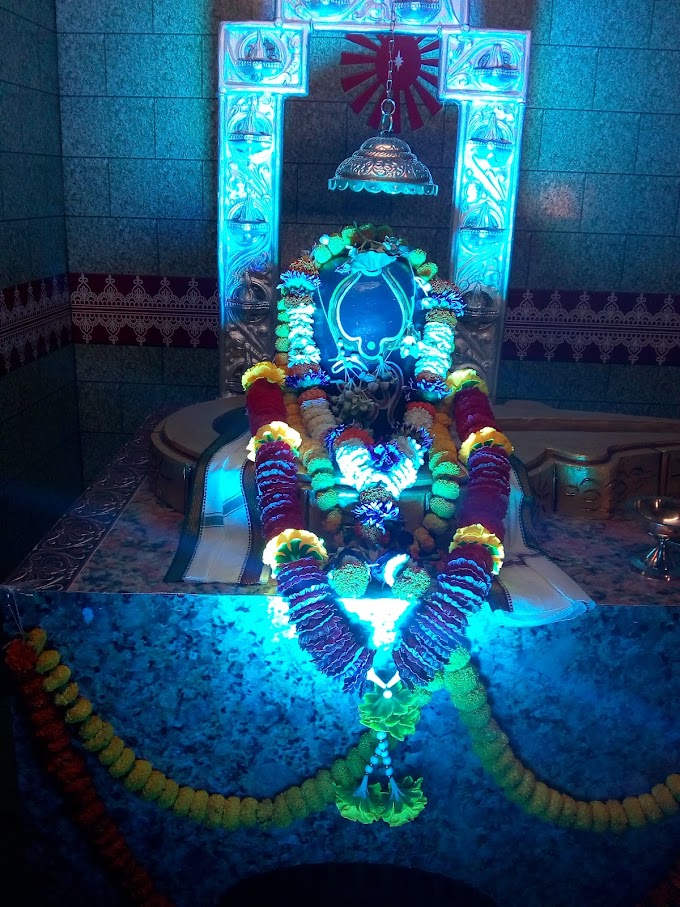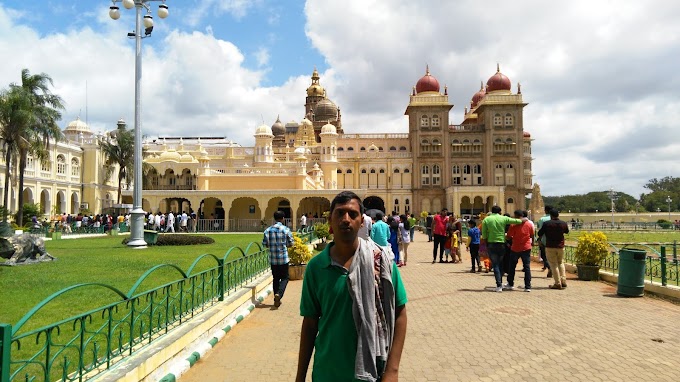Vedas is a old and holy script of the Hinduism. The word “VEDAS” is a Sanskrit word
which mean “KNOWLEDGE” ‘WISDOM”. As per Hindu
mythology Lord Brahma is the father of Vedas. Lord Brahma think
about to create the human (Manusya) and
other creature in earth and before to create such a think, Lord Brahma think
that how the human (manusya) live, what they will do (karma), what dharma are for them. For that Lord
brahma create four Vedas. Everything are cover in those vadsa. There are four
Vedas i.e. Rigveda, Yajurveda, Samadeda,
Atharvaveda. Each Veda has four part i.e. Samhitas (mantras), Aranyakas (tradition,
rituals, ceremonies, etc), Brahmanas (commentaries
on rituals, ceremonies and sacrifices), and Upanishads (meditation, philosophy and spiritual knowledge).
The scientist and historian has given their opinion that the vedas are generated during the Vedic period. but not know till date has not been explain what is vedic period. And really vedis are created by lord Brahma?
There are two differing assert regarding the origin of Vedic
thought. One claims, it was developed in the Indus Valley by the people of the Harappan Civilization
and the second one is the school of
thought, more commonly accepted, is that the religious concepts were developed
by Aryans. Actually there is no evidence regarding the period when it
come. According to the mythology, Ved Vyasa compiled all the four
Vedas, along with the Mahabharata and the Puranas.
The word “Samhita” is a
Sanskrit word which means put together, joined,
union, collection and a
methodically. There is only bmantras in this chapter.
The term Aranyaka is derived from the Sanskrit word ‘Aranya‘ which
means ‘forest’ because ‘they were works
to be read in the forest’.
The ritualistic commentary on the mantras and rituals are
called the Brahmanas. Brahmanas can be translated as 'explanations of sacred knowledge or doctrine'. The word 'Brahmana'
include Vyakhyana, Pravachana, Vijnayate.
Upanishad means sitting near devotedly, brings picturesquely to mind
an earnest disciple learning from his teacher. The Upanishads is commonly used
to as Vedānta. Vedanta has been interpreted as the
"last chapters, parts of the Veda" and alternatively as "object, the highest purpose
of the Veda". There are 13 number of classification of Upanishads i.e.
Brhadaranyaka Upanishad,
Chandogya Upanishad,
Taittiriya Upanishad,
Aitereya Upanishad,
Kausitaki Upanishad,
Kena Upanishad, Katha Upanishad, Isha Upanishad, Svetasvatara Upanishad,
Mundaka Upanishad, Prashna Upanishad, Maitri Upanishad, Mandukya Upanishad.
Rigveda:-
In Rigveda there are 10,552 mantras and 10 mandalas. As per Hindu mythology, the language of Vedas is Sanskrit. Rig Veda mainly contains various Mantra (Sloka) for praying to Vedic Gods like as Agni dev (Fire God), Indra (The king of Heavens), Mitra, Varuna dev (Water God), Surya dev (Sun God) etc. These Mantra (Sloka) are called Riks (Rigveda). The Rigveda represents the earliest holy book of India. It is oldest and biggest amongst all the four Vedas. Hence Vedas are also called Shruti. Most importantly the word “Padapatha” that has each word isolated in pausa form and is used for just one way of memorization; and the word “Samhitapatha “ that combines words according to the rules of sandhi (the process being described in the Pratisakhya) and is the memorized text used for recitation.
The
manuscript is organized in 10 books, known as Mandalas, of varying age and
length. The "family books"( mandalas) are the oldest part of the
Rigveda and the shortest books. they are arranged by length and account for 38
percent of the text. The eighth and ninth mandalas, comprising Solka or stuti
of mixed age, account for 15 percent and 9 percent, respectively. The first and
the tenth mandalas are the youngest; they are also the longest books, of 191
suktas. Each suktas accounting for 37 percent of the text.
Each
mandala consists of Solka called sūkta which means for various sacrificial rituals.
The sūktas in turn consist of individual stanzas
called praise which are further analysed into units of Solka is
called pada.
Yajurveda
The
Yajurveda is second of the four Vedas and followed by Rigveda and also the
basic scriptures of the religion. It is also called as Adhvaryuveda. It is said
to have emerged out of the southern face of Brahma ( the creator or
father).
The word “Yajur
Veda" is an ancient Hindu
scripture devoted to the worship of the gods. It describes the way of
performance of religious rituals and sacred ceremonies. The word “Yajur Veda" comes
from Sanskrit word, yajus, meaning "worship" or
"sacrifice," and veda, meaning
"knowledge
.
Yajurveda is quite different from the Rigveda & Samaveda Samhitas. It is
principally in prose form. The word ‘Yajush‘ in the Yajurveda is explained
variously. Yajurveda is divided in to part one is Krusna Yajurveda and another
is Sukla Yajurveda.
1. Kṛṣna Yajurveda
2. Śukla Yajurveda
Samaveda
The Sama Veda represents the force of
spiritual knowledge and the power of devotion. The book was revealed to Vayu
rishi. It isconsisted of solkoa of Rigveda put to a musical measure. Hence the
text of the Sama Veda is
an alternative version of the Rig Veda.
The word “Samaveda” is derived
from two Sanskrit work i.e. saman and veda. The word “sāman’” which means "song"
and the word veda which
means "knowledge. Samaveda is a Veda of melodies, musical and
chants. It is an ancient Vedic Sanskrit text, and part of the scriptures
of Hinduism.
The
Samaveda consist of two major parts. The first part include four melody or
musical collections (song or gana) and the second part three verse
"books"
The
Samaveda consists of 1,549 solka, taken almost entirely from Rigveda, except
for 75 Solka. The largest number of solka come from Books 9 and 8 of the
Rig Veda. Some of the Rigvedic solka are repeated many time. There are total 1,875 number of solka.
ATHARVAVEDA:-
Atharvaveda
is composed in Vedic Sanskrit, and it is a collection of 730 Solka with
about 6,000 mantras, divided into 20 books. Atharva Veda deals more with the diseases and their remedies
(Medicine) therefore it is called as veda of magical formula. It is aslo
important like other veda. Atharvaveda mainly dealt with the medicine which can
be procured from plant and other natural. It is a very old medicine book than
ever. yurveda is an Upaveda
of Atharva.
The
Atharvaveda originally was composed into 18 Kaṇḍas, and the last two Kandas were added later. These
books are arranged neither by subject nor by authors but by the length of the Solka. The word ‘Atharvan,’ is
derived from ‘athar,’ which means ‘the priest of fire.’ So, Atharvan is the
name of an ancient sage who ‘brought down fire from heaven’ to earth for the
sacrificial rites.
Over the centuries, the four Vedas were orally transmitted
and edited by numerous schools known as shakhas. On one knows that when composed the original veda. At present day we know only
by means of Hindu
Mythology.












